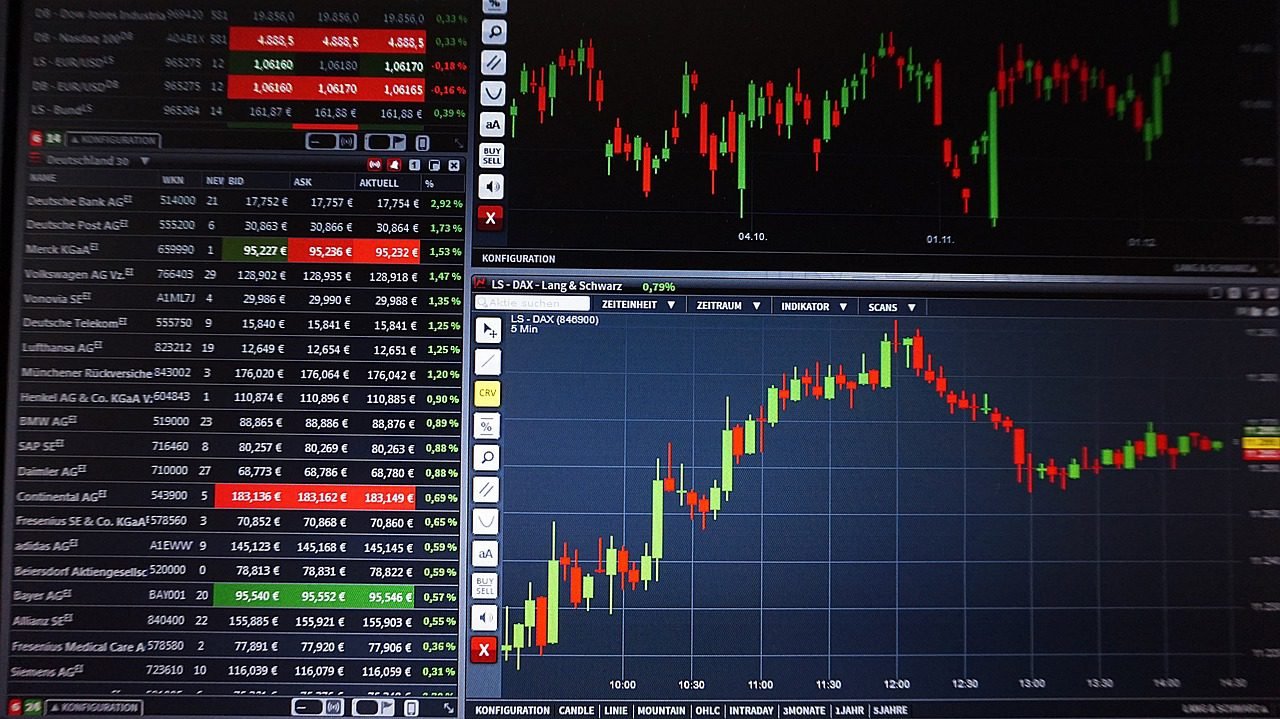Is It Possible to Profit Consistently in Forex Trade?
Yes, it is possible to profit consistently in forex trading. Success requires knowledge, strategy, discipline, and risk management. Forex

Yes, it is possible to profit consistently in forex trading. Success requires knowledge, strategy, discipline, and risk management.
Forex trading offers the potential for significant profits due to its high liquidity and 24-hour market access. Traders must develop a deep understanding of market trends, technical analysis, and economic indicators to make informed decisions. Implementing a robust trading strategy is crucial for consistent success.
This includes setting clear goals, maintaining a disciplined approach, and managing risks effectively. Emotional control plays a vital role in preventing impulsive decisions that can lead to losses. Continuous learning and adapting to market changes also contribute to long-term profitability. With dedication and the right approach, traders can achieve consistent profits in the forex market.

Market Fundamentals
Understanding Market Fundamentals is key for consistent profit in Forex trading. This includes knowing about currency pairs and the main market participants.
Currency Pairs
In Forex, currencies are traded in pairs. Each pair includes a base currency and a quote currency. For example, in the EUR/USD pair, EUR is the base currency and USD is the quote currency.
There are major, minor, and exotic pairs. Major pairs include currencies from large economies, like EUR/USD or GBP/USD. Minor pairs do not include USD, such as EUR/GBP. Exotic pairs involve a major currency and a currency from a small or emerging economy.
| Type | Example |
|---|---|
| Major Pair | EUR/USD |
| Minor Pair | EUR/GBP |
| Exotic Pair | USD/TRY |
Market Participants
The Forex market includes different market participants. These participants shape the market’s dynamics. They can be categorized into retail traders, institutional traders, and central banks.
- Retail Traders: Individual traders using platforms to trade.
- Institutional Traders: Large entities like hedge funds and banks.
- Central Banks: National banks that impact currency prices.
Each participant has different goals and influences the market uniquely. Retail traders aim for profit, while central banks focus on economic stability.
Strategies For Success
Strategies for success in Forex trading require careful planning and analysis. Traders must employ various methods to ensure consistent profits. The two most common strategies include technical and fundamental analysis.
Technical Analysis
Technical analysis involves studying price charts and trading volumes. Traders use this data to predict future price movements. Below are some key components of technical analysis:
- Chart Patterns: Shapes formed by price movements.
- Indicators: Tools like moving averages and Bollinger Bands.
- Trend Lines: Lines drawn to identify the direction of the market.
Traders often use a combination of these tools. This helps in making more informed decisions.
Fundamental Analysis
Fundamental analysis examines economic indicators and news events. This method helps traders understand the broader market context. Key factors include:
- Economic Reports: Data like GDP and employment numbers.
- Interest Rates: Central bank policies that affect currency value.
- Political Events: Elections and geopolitical tensions.
Traders who focus on fundamental analysis stay updated with global news. They use this information to forecast market movements.
Combining both technical and fundamental analysis can lead to better trading decisions. This holistic approach increases the chances of consistent profits.
Risk Management
Forex trading offers opportunities to profit but comes with risks. Effective risk management is crucial for consistent success. This section explores key risk management strategies.
Stop-loss Orders
A stop-loss order limits potential losses in a trade. It automatically closes a position when it reaches a specific price. This helps traders avoid significant losses. Setting a stop-loss requires careful analysis. It should reflect your risk tolerance and market conditions.
Traders often use technical analysis to determine stop-loss levels. Common methods include support and resistance levels. These methods help in setting realistic stop-loss points. For example, placing a stop-loss just below a support level can be effective. This minimizes the risk while allowing room for market fluctuations.
Position Sizing
Position sizing controls the amount of money allocated to a trade. It helps manage risk and protect your capital. The size of your position should be proportionate to your account size. A common rule is not to risk more than 2% of your account on a single trade.
Here’s a simple table to illustrate position sizing:
| Account Balance | Max Risk (2%) | Position Size |
|---|---|---|
| $1,000 | $20 | 0.02 lots |
| $5,000 | $100 | 0.1 lots |
| $10,000 | $200 | 0.2 lots |
Position sizing ensures that you do not over-leverage your account. This helps in maintaining long-term profitability. It also reduces stress and emotional trading. By sticking to a proper position size, you can trade more confidently.
In summary, effective risk management involves using stop-loss orders and proper position sizing. These strategies help in minimizing losses and maximizing profits.

Psychological Aspects
Profit in Forex trading depends on several key psychological aspects. Traders need to manage their mindset effectively to achieve consistent results. This section will discuss two critical elements: Discipline and Emotional Control.
Discipline
Discipline is crucial in Forex trading. It helps traders stick to their plans. A well-defined trading plan includes entry and exit points. It also outlines risk management strategies. Without discipline, traders might deviate from their plans. This often leads to losses.
Creating a trading schedule is essential. It helps traders avoid impulsive decisions. A disciplined trader follows their strategy strictly. They do not let emotions sway their decisions. This steadiness is key for long-term success.
Emotional Control
Emotional control is another vital aspect. Forex trading can be stressful. Emotions like fear and greed can affect decisions. Traders need to manage these emotions effectively.
One way to achieve emotional control is through mindfulness. Practicing mindfulness can help traders stay calm. It allows them to make rational decisions.
Another method is to set realistic expectations. Unrealistic goals can lead to frustration. This, in turn, can cloud judgment. Setting achievable targets helps maintain emotional balance.
Here is a table summarizing the key points:
| Aspect | Importance | Methods |
|---|---|---|
| Discipline | Helps stick to plans | Follow a trading schedule |
| Emotional Control | Avoids impulsive decisions | Practice mindfulness |
Maintaining discipline and emotional control can significantly enhance trading performance.
Tools And Resources
Forex trading requires the right tools and resources for consistent profits. Traders need reliable platforms and educational materials. These can help in making informed decisions.
Trading Platforms
A good trading platform is essential. It should offer real-time data, advanced charting tools, and a user-friendly interface. Popular platforms like MetaTrader 4 and MetaTrader 5 provide these features.
- Real-time data: Keeps you updated with market movements.
- Advanced charting tools: Helps in technical analysis.
- User-friendly interface: Ensures ease of use.
Some platforms offer mobile apps. This allows trading on the go. Make sure to choose a platform with good customer support.
Educational Materials
To profit in Forex, knowledge is key. Access to quality educational materials can make a difference. Many brokers offer free resources.
| Type of Material | Benefits |
|---|---|
| Webinars | Interactive learning with experts. |
| eBooks | In-depth knowledge on Forex topics. |
| Video tutorials | Visual learning of complex concepts. |
Online forums and trading communities are also useful. You can learn from experienced traders. Practice accounts help in applying this knowledge without risk.
Frequently Asked Questions
Can You Consistently Make Money With Forex?
Consistently making money with forex is challenging. Success requires knowledge, discipline, and effective risk management. Most traders face losses.
How To Be Consistently Profitable In Forex Trading?
To be consistently profitable in forex trading, develop a solid trading plan. Manage risks carefully. Stay disciplined and control emotions. Continuously educate yourself. Use reliable tools and analysis.
Can You Be Consistent With Forex?
Yes, you can be consistent with forex trading. Success requires discipline, strategy, and continuous learning. Practice risk management and stay informed.
Is It Possible To Be A Consistently Profitable Trader?
Yes, consistent profitability in trading is possible. It requires discipline, risk management, and continuous learning. Traders must adapt to market changes and avoid emotional decisions.
Conclusion
Consistent profit in forex trading is challenging but achievable. Success requires discipline, strategy, and ongoing education. Research, practice, and risk management are crucial. Traders who stay informed and adapt to market changes can improve their chances. While difficult, consistent profits are possible with dedication and smart trading techniques.















